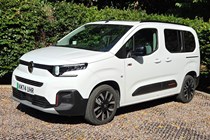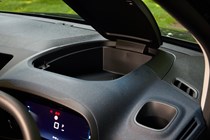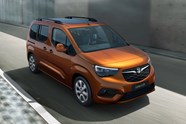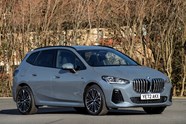
Citroen e-Berlingo (2025) review: proper family transportation
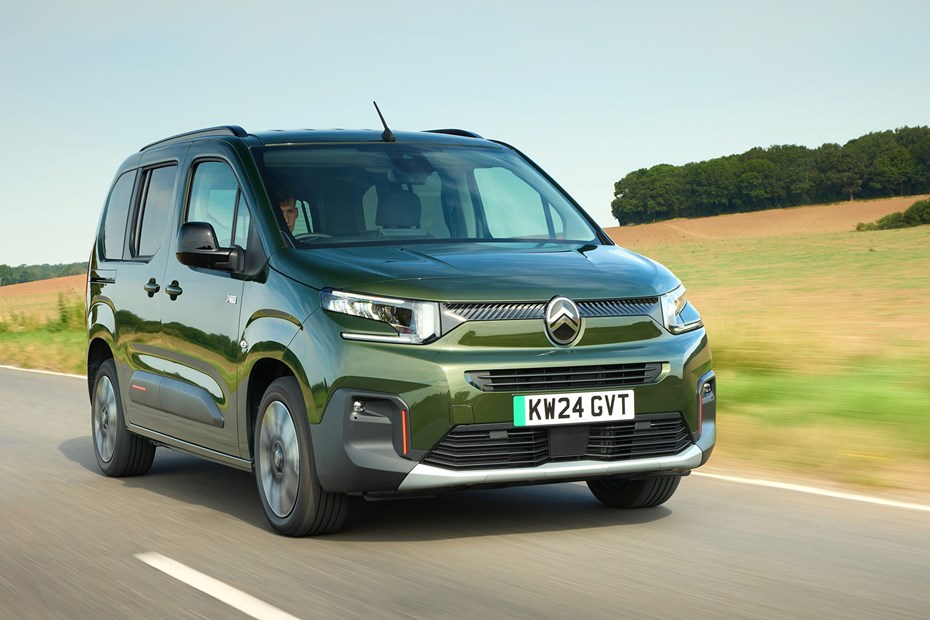
At a glance
| Price new | £31,240 - £33,905 |
|---|---|
| Used prices | £9,740 - £19,836 |
| Road tax cost | £195 |
| Insurance group | 18 - 21 |
Get an insurance quote with

|
|
| Fuel economy | 2.7 - 3.6 miles/kWh |
| Range | 167 - 220 miles |
| Miles per pound | 4.3 - 10.6 |
| Number of doors | 5 |
| View full specs for a specific version | |
Available fuel types
Fully electric
Pros & cons
- Gigantic boot
- Spacious for passengers
- Relaxing to drive
- Driving range still relatively short
- Electric power pushes up price
- Image will be a problem for many
Citroën e-Berlingo MPV rivals
Overview
Should you buy one?
If you can appreciate function over form, the e-Berlingo makes a terrific family car. It’s not terribly expensive by electric car standards yet offers an exceedingly practical interior with enough room for four or more adults.
Electric power won’t suit everyone, especially those that do long distances regularly, and it’s pricier than the combustion-engined Berlingo. Those that would prefer a sharper driving experience from their MPV are best served by the pricier BMW 2 Series Active Tourer.
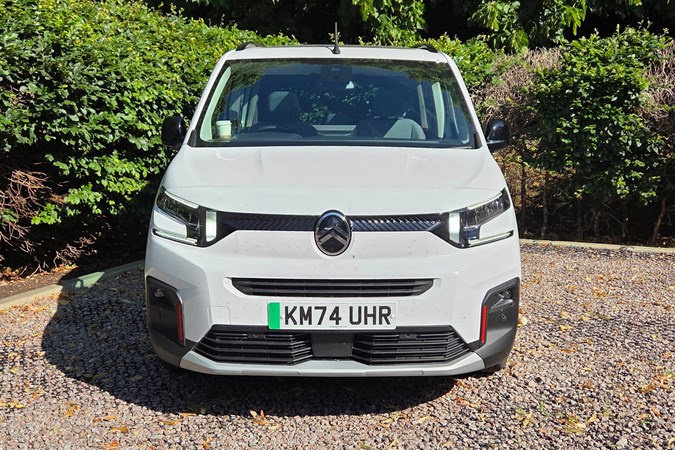
What’s new?
A 2024 update brings a whole new face to the Citroen e-Berlingo, but it’s the changes you can’t immediately see that are most noteworthy. A new battery pack and more efficient electronics have pushed the official WLTP driving range beyond 200 miles for all models, and acceleration has been improved, too.
Citroen’s great Advanced Comfort Seats are available for the first time, and the infotainment system gets a much needed upgrade. I also appreciate the steering wheel paddles to vary the regenerative braking strength and the higher definition reversing camera.
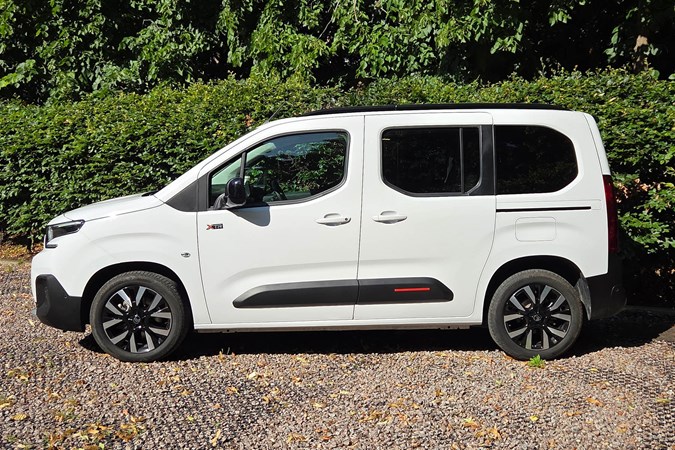
You can still buy petrol and diesels that we cover in the main Citroen Berlingo review, where you’ll also find greater detail on the space and practicality. After all, unlike some electric versions of cars, the Berlingo’s interior is unaffected by its propulsion method.
Rivals are getting harder to find these days, with most manufacturers favouring van-based MPVs such as this. Indeed, the Peugeot Rifter and Vauxhall Combo Life are essentially the same mechanically. Similarly, the Ford Tourneo Connect and Volkswagen Caddy Life are also based on vans. If you’re feeling sniffy, the BMW 2 Series Active Tourer, Mercedes B-Class and Volkswagen Touran remain as dedicated MPVs with more car-like driving manners.
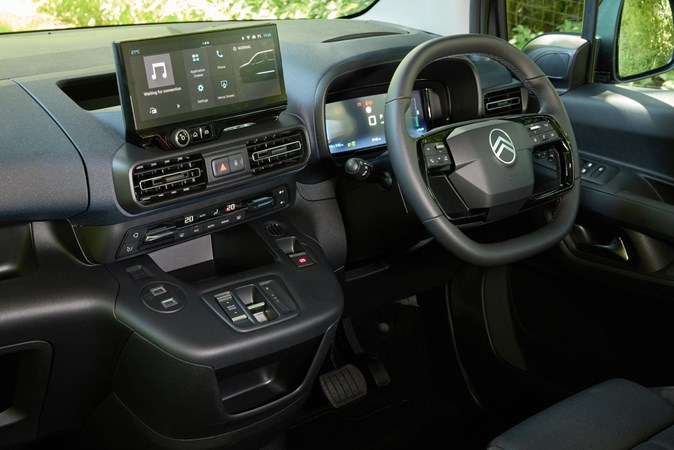
What’s it like inside?
Citroen has done well in disguising the Berlingo’s van origins with colourful trims and a faux strap on the top of the dash, but it’s more of a fake moustache than skilled prosthetics. The high roofline, big windows and high driving position all scream van. It is a simple to operate environment thanks in part to physical controls for the heater and a big volume knob within easy reach of your front seat passenger.
Given that it’s also wider than most cars, space for passengers is generous. You’ll have no trouble fitting four adults inside, and it’s wide enough for a fifth to be relatively comfy, too. Front seat passengers have loads of space, although the lack of storage between the front seats is disappointing.
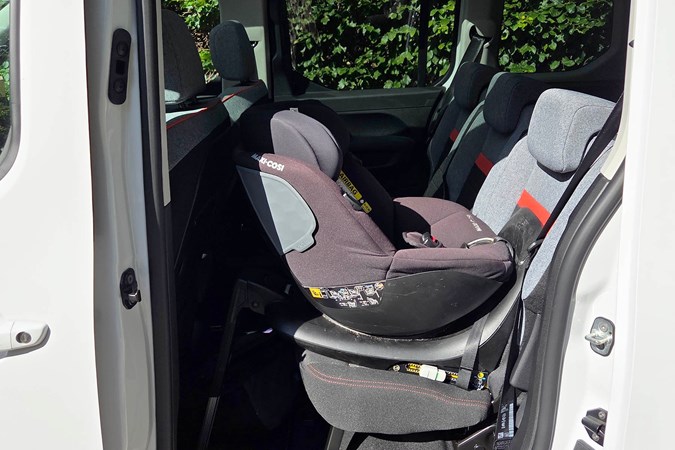
Those in the back have tonnes of headroom and good legroom, making the Berlingo more spacious than similarly priced SUVs or estates. The longer XL model has the option of a third row of seats that are big enough for adults, making it a true seven-seater. All versions get sliding rear doors with huge apertures.
All e-Berlingos get a 10-inch touchscreen infotainment system with Apple CarPlay and Android Auto, with sat nav only optional on top spec Max trim. It’s a big step on from the old 8.0-inch system, with sharper responses and crisper graphics. It’s also less confusing than the Volkswagen Caddy system, and still has a proper volume knob while the heater is controlled by buttons and switches below it.
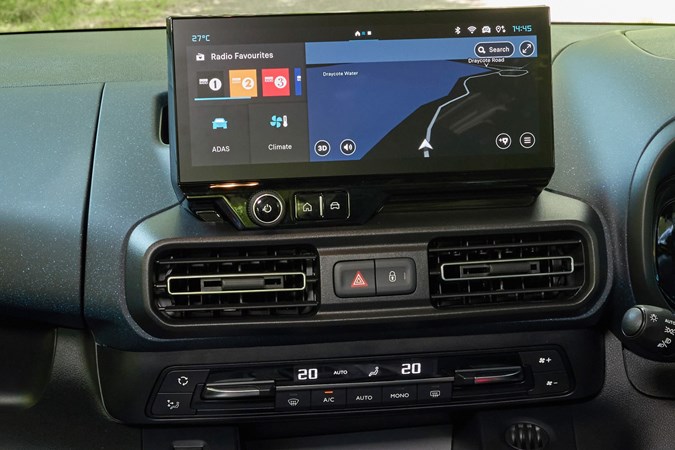
For even more detail on the interior, infotainment and practicality, have a look at our main Berlingo review.
Comfort
You’ll find the Berlingo’s driving position is decent, with seat, pedals and wheel lining up nicely. I found the Advanced Comfort Seats in my top spec Max test car to be very comfortable, although some additional side bolstering to hold you in place better when cornering would be welcome. Some also found the seat base was a little too short, failing to support their thighs adequately.
Those in the middle row will appreciate the opening windows in the sliding doors and the three equally sized chairs. That means the centre passenger isn’t perched on something designed for only occasional use, which combined with the flat floor make it a great option for those who regularly have a car full of people.
Keyless entry is a cheap option I’d recommend, although no electric tailgate is offered. Similarly, while top Max trim gets a heated steering wheel, you can’t get heated seats. A shame when a more efficient heat pump based heating system is an optional extra.
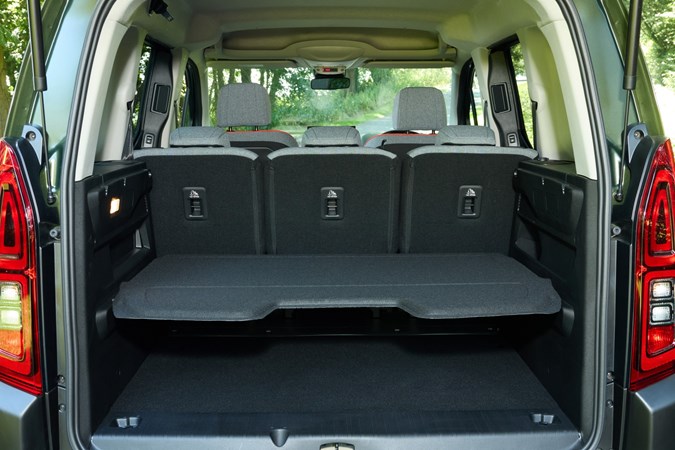
Citroen e-Berlingo boot space and practicality
Boot space is very impressive, with more cargo carrying capacity than most far larger SUVs and estates. That’s especially true of the XL once you’ve folded the third row and tumbled them forwards. Space up to the parcel shelf is a whopping 775 litres for the smaller M, or a ridiculous 1050 litres for the XL.
If you need even more space, you can haul the heavy rear chairs out and fold the centre row flat with the boot floor to make a van. To accommodate really long items, the front passenger seat even folds flat.
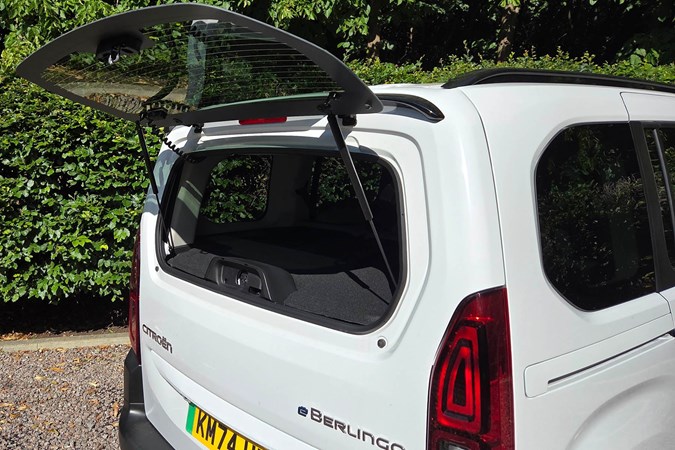
Even our test M – the shorter of the two Berlingo variants – swallowed a chunky sideboard with ease, although the optional Modutop roof storage prevented it from standing upright. A low floor helps with loading, and makes the Berlingo an exceptionally practical thing for those with bikes, paddleboards or other outdoor pursuits.
Safety
While the Citroen Berlingo’s four-star Euro NCAP crash test score might not be headline-grabbing, it’s a step up from its predecessor’s three-star rating. It is worth pointing out that this was carried out under less strict testing in 2018, so can’t be directly compared to rivals tested under newer guidelines.
Still, not only is it less likely to injure you in an accident than before, it’s less likely to have one in the first place. Automatic emergency braking, lane assist and electronic stability control are all standard, although blind spot monitoring is optional and only as part of a pack on top Max models.
Isofix-wielding parents will find a suitable mounting system for each of row two’s three seats on Max trim, a trick not many family cars can manage. They are a bit fiddly to access via zips in the fabric, but didn’t prove too tricky to line up despite no plastic guide.
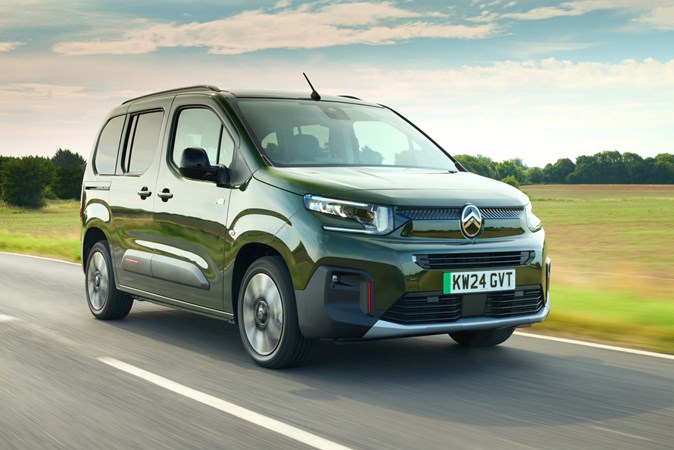
Citroen e-Berlingo motors and batteries
On the face of it, the Berlingo’s motor and battery selection looks the same as before. However, battery capacity is up two whole kWh and while power stays at 136hp, two seconds have been knocked off the 0-62mph time. 9.9 seconds still isn’t fast, but it feels much perkier on the road with the post-2024 battery and electronics.
Although official range is just over 200 miles, expect to see far less in mixed driving. If you spend a fair amount of time on the motorway and fast flowing A roads, expect around 140 miles, less in winter. Stick to an urban environment and you’ll get nearer the official figure.
The Berlingo can charge at up to 100kW, meaning a 10-80% top up takes just 30 minutes on a CCS rapid charger than can support it. Those with a regular wallbox will need around seven and a half hours to get from 0-100%. An 11kW onboard charger is optional which drops this time to five hours.
What’s it like to drive?
Very easy. Acceleration is smooth and reasonably nippy around town, tailing off as you reach motorway speeds where the barn door aerodynamics come into play. Rival electric SUVs can offer much faster acceleration, but the Berlingo’s relaxed vibe means you rarely want for more power.
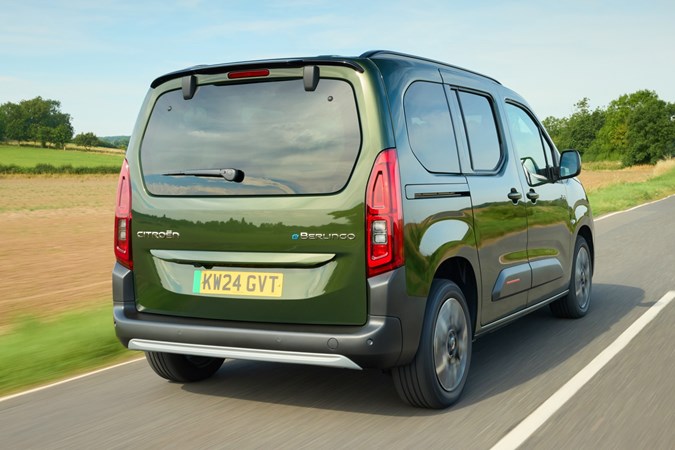
Unlike many manufacturers that promise a sporty drive from the most sensible of family cars, Citroen does things differently. Comfort is the priority here, with soft suspension delivering a relaxing ride. Severe potholes and lumps do cause the suspension to trip up slightly, but it’s a rare enough occurrence to not cause bother.
That’s not to say that the Berlingo handles badly – far from it. In fact, for a high-sided, van-based car, it’s neat and tidy around corners, with a lot less body lean than you might expect. Even so, the Berlingo doesn’t feel particularly agile or willing, with the BMW 2 Series Active Tourer and Volkswagen Touran proving far more enjoyable in the bends.
The Berlingo’s light steering is precise enough but doesn’t give a great sense of connection to the road’s surface. In other words, it’s perfectly capable if not something you’ll be looking for excuses to drive, although the brake pedal should be commended for its predictability.
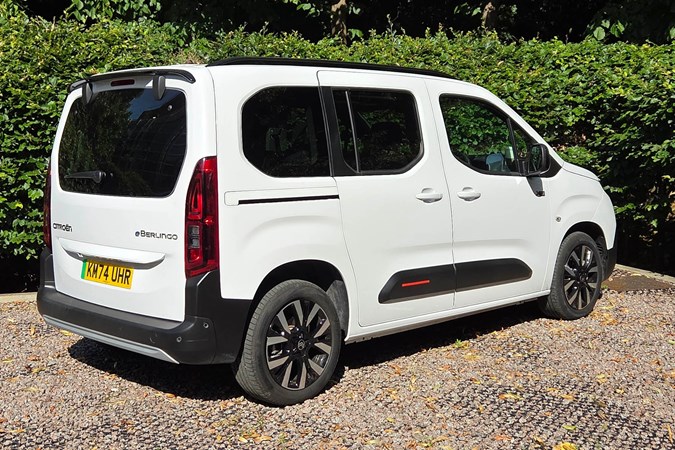
We’ve yet to drive a Berlingo with the optional Advanced Grip Control, but the system has proved effective on other PSA cars fitted with the system. Essentially it’s a sophisticated traction control system that meters power and torque to the front wheels in specific ways to maximise traction on surfaces such as ice, mud and sand. Pair this with the right tyres, and you’ll be surprised at how capable it is.
Running costs
The e-Berlingo costs a similar amount to the MG S5 and entry-level versions of the Skoda Elroq and Kia EV3, while Citroen often has attractive finance deals. Service plans are available, and consumables are unlikely to be too pricey.
What models and trims are available?
Entry-level Plus trim gets the basics, and is the only way you’ll get the seven-seat XL model. You still get air-con, rear parking sensors, automatic LED headlights, auto wipers, Apple CarPlay and Android Auto and adjustable lumbar support for the driver. Wheel trims are standard with alloys a cheap upgrade.
Max gives you larger 17-inch alloy wheels, power folding mirrors, dual-zone climate control, a reversing camera, electric rear windows, opening tailgate glass, better seats, a heated steering wheel and tray tables for the back seats. Given that it also opens the door for more options, it’d be Max I’d pick.




